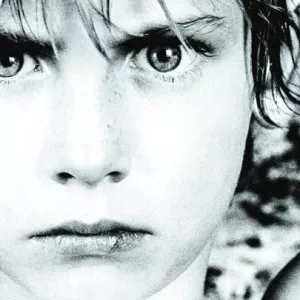HEALING THE BROKEN PLACES
The child that is not embraced by the village will burn it down just to feel its warmth.
– African proverb
In a culture conditioned to a linear understanding of causes and conditions we assign blame to a problem, focusing our ire on the object of blame. In extreme cases, we might describe a perpetrator as inhuman, animalistic, or assign them superhuman attributes such as being “pure evil” or “monstrous.” In any case, we are protected from implicating ourselves in the problem.
 When emotions run high, the fear mind takes over and latches onto simple answers. And naturally, we believe we are right. This feeling of righteousness wants retribution and dismisses the inclusion of societal and familial issues as pandering snowflakery. The Buddha spoke of Karma as the law of cause and effect. He also spoke of the interdependence of every event to all else. Despite conditioned tendencies toward black and white binaries, the Buddha saw that the causes of any event are myriad and nuanced. This would seem frustrating to the raging defensive mind latching onto rightandwrong. But a reactive mind is generally devoid of nuance or compassion. Compassion doesn’t mean kindness to those who’ve caused harm. It means understanding those who cause harm.
When emotions run high, the fear mind takes over and latches onto simple answers. And naturally, we believe we are right. This feeling of righteousness wants retribution and dismisses the inclusion of societal and familial issues as pandering snowflakery. The Buddha spoke of Karma as the law of cause and effect. He also spoke of the interdependence of every event to all else. Despite conditioned tendencies toward black and white binaries, the Buddha saw that the causes of any event are myriad and nuanced. This would seem frustrating to the raging defensive mind latching onto rightandwrong. But a reactive mind is generally devoid of nuance or compassion. Compassion doesn’t mean kindness to those who’ve caused harm. It means understanding those who cause harm.
When we assign blame, we are forcing reality into a binary. A binary which has ourselves and our value systems as the prime arbiter. This is good and evil from the way we see it. And the angrier we become the narrower our focus. This might be a factor in why people of color are incarcerated at higher rates than whites in our predominantly white culture. When we are seeing it our way, what of those who don’t conform? But is this willed ignorance only creating time bombs? What are we missing when we push some aside? And are those shadowed voices so needing to be heard that they will grow in ire until they erupt in violence? The Buddhist teachings on compassion are unequivocal in their directives that we see beyond our parochial beliefs and begin to understand others. Are we able to step back and see those we demonize? Only recently, a court found the parents of a son accused of gun violence as culpable. Was this a groundbreaking step in widening perspective or was it just shifting the binary? Looking at the home, looking at the school, looking at the community and looking at the gun communities and legislation tied to the influence of economic pressure are all ways that violence is interconnected. So, as the Buddha taught, Karma is complicated. Then how do we manage the overwhelming preponderance of information that is karmic cause and condition?
What can we do?
Blame is not doing. Nor are platitudes. Nor are promises. How do we begin right here right now? We all have a child, either in our family or in our heart, who needs care and support. But are we listening? Or are we shunting the child aside as we are consumed by our busy lives? Are we in fact ashamed of the child? Are we embarrassed by the snowflakery of caring for an inner child? All too often in our society and our heart we are pushing the children away. Ignoring the most potent and important part of the village. In many indigenous cultures, villages cared for their children. This not only created homecare for stressed parents, but also allowed a wider perspective for the child to grow. This wider perspective also helped to moderate any neurosis the caregiver might pass on the child. A village based on community is self-healing and co-supportive. In this way the child can grow with freedom to become healthy versions of themselves, not reactive copies of a copy of their parents. In some cultures, criminals and those with mental illness were taken into counsel with the elders of the community. This is a healing circle. The view is that connection is healing and isolation, whether by social ostracism or mental evasion, encourages infirmity. The places we hide in our mind may be protective. But they are also places we fail to grow. They are the burning children of our hearts waiting to be heard, held, and understood.
A view of compassion may be that we have the capacity to be our own village. And maybe we can extend our view outward and see others as ourselves. We are all hurting and unheard. Maybe by awareness we can begin to see and heal the places within ourselves that are keeping us in darkness. And maybe we can learn to give expression to the wounded children that so desperately need our love. One way to illuminate the darkness is to burn the village. Another way is to touch the heart and allow that child to be accepted as they are before that happens. Perhaps the flames of anger can be softened into the warmth of compassion.
Compassion can be seen as the transformation of hatred into empathy. We don’t have to fear the flames. We can hold them and allow their rage to soften into warmth.
The picture is from photo sessions for the album WAR by U2.

